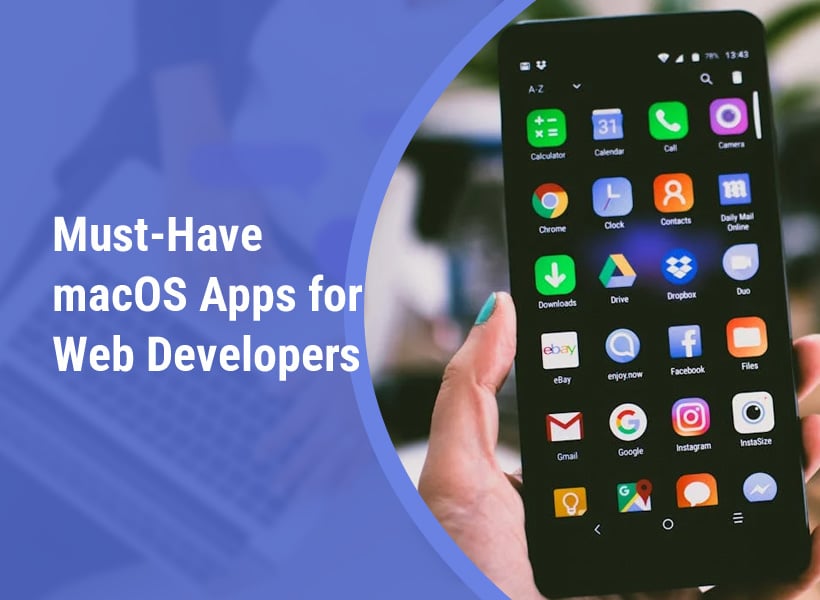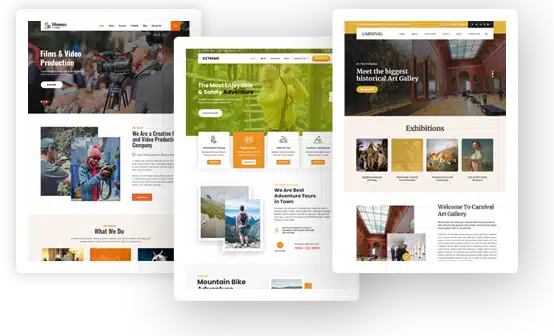Must-Have macOS Apps for Web Developers

MacOS is an excellent platform for web development. It’s clean, stable, and fast. But the real power of any operating system lies in the software that runs on it. Find the right apps, and you can write better code, test quicker, and manage your projects more easily.
The best apps also help you stay focused, work more efficiently, and avoid minor mistakes that can cost you time in the long run. If you’re working on the web in any capacity, these apps make your job easier, cleaner, and faster. You’ll spend less time dealing with setup and more time building.
This article shares some of the must-have macOS apps and the best Mac apps for developers to build apps for iPhones, iPads, or any other Apple device.
1. Visual Studio Code
VS Code is easily one of the most flexible code editors on the market. It’s lightweight yet still powerful enough for real web development. You can use any language—JavaScript, Python, HTML, CSS, etc.
Visual Studio Code suits any web developer working on desktop, Windows, mobile, or web app development. Worldwide, Visual Studio Code is the second most searched IDE with a 15.24 share, slightly behind Visual Studio.
One of the most significant benefits of working with VS Code is its high level of customization. You can add extensions for almost everything: linting, Git integration, different frameworks’ support (e.g., React), themes, and live previews. VS Code also comes with:
- IntelliSense: Writes code for you and spots errors early on.
- Built-in terminal: No need to keep switching between apps to run commands or scripts.
Whatever your project is, front-end, back-end, or full-stack, Visual Studio Code comes in handy for both beginners and experienced web developers.
2. Safari (for testing, privacy, and workflow tweaks)
Safari is a macOS default browser; you still need it to test web stuff. If your app users browse on Safari, especially on macOS and iOS, you need to ensure website functionality, security, performance, and user experience.
Fortunately, Safari features a simple Web Inspector that enables you to test and debug layout issues, inspect elements, and view network requests without requiring additional installation. It’s also privacy-focused. You can disable tracking and utilize privacy-enhancing features for sensitive research.
Another reason you may need Safari if you’re a web developer is that you can change the search engine on Mac from Safari’s settings. While this may seem like a minor tweak, it enables you to quickly curate the results you receive based on your workflow.
For example, switching to a service like DuckDuckGo or Startpage can be beneficial if you prefer more technical or privacy-focused results. Simply put, keep Safari around—you may not use it every day, but it comes in handy for a full testing setup.
3. iTerm2
If you spend a lot of time in the terminal (and you probably do), iTerm2 makes your work even easier. It’s faster than the default macOS Terminal as you can split windows, open multiple sessions, and switch between them using shortcuts.
It also features a more advanced search function, allowing you to search output, error logs, or command history without manually scrolling back. For other projects, files in iTerm2 provide a different look and feel and behavior. This helps if you’re switching between staging and production environments.
iTerm2 also remembers your scroll history, ensuring you don’t lose the output when the session ends or the window is closed. The app works great with tools like Git, Docker, and Node. With iTerm2, you get a better, faster, and more intelligent terminal.
4. Postman
Most web applications need to communicate with APIs, and Postman makes this process easy. It provides a convenient interface for building, sending, and testing requests without requiring you to open your browser or write additional code. With a simple click, you can switch from the GET method to the POST method, and so on.
Postman also helps you stay organized, which is one of the key web development best practices. You can save requests in folders, group them by environment, and reuse parameters. It also handles REST or GraphQL APIs smoothly, making it useful whether testing a small internal service or connecting to a complex third-party API.
Everything you need from headers, body content, and authentication tokens—is in one place. That makes debugging and verifying that endpoints return the expected results easier. You can even write basic tests to catch errors early on.
Postman works great for front-end and back-end devs; it is the fastest way to test if your app communicates correctly with the server.
5. TablePlus
All web apps deal with data. TablePlus makes that a lot easier to manage without getting in your way. It connects to databases such as MySQL, PostgreSQL, SQLite, and many more. Once connected, you can browse tables, run queries, and view your results.
The interface is quick and simple, without unnecessary buttons or tabs. You can even open multiple databases simultaneously, switch between instances, and run queries side by side.
Keyboard shortcuts in TablePlus let you keep your hands on the keyboard for most tasks. A few keystrokes will get you to a record filter or jump to another table. You may prefer writing raw SQL, but TablePlus saves you a lot of time. The editor is fast and features nice syntax highlighting.
One of the advantages of using TablePlus is that it doesn’t abstract away how you think about your data and database; it just makes working with your data easier and faster.
6. PixelSnap
The pixel count when working with designs or any front-end work, and that’s where PixelSnap helps. With this macOS app, just click and drag on the screen, and you’ll get the pixel distance between any two points.
It works wherever you are—in your browser, code editor, or a design file. You can measure margins, padding, icon sizes, or image widths in seconds.
For front-end developers, PixelSnap offers a valuable tool for identifying layout issues that can be difficult to spot in code. It also automatically detects edges and aligns your measurements, so you don’t have to zoom in or guess where to start measuring.
Final Thoughts
You don’t need a massive toolkit to build for the web on macOS—just the essentials that help you get things done. The above must-have apps for web developers cover your everyday workflow, including writing code, managing databases, and testing APIs.
However, what sets them apart is their laser-like focus. There’s no extra clutter or slow load times—just clean, simple functionality when you need it. And perhaps more than anything else, they don’t waste your time. That’s the efficiency you need to stay in flow, not stuck in setup.

